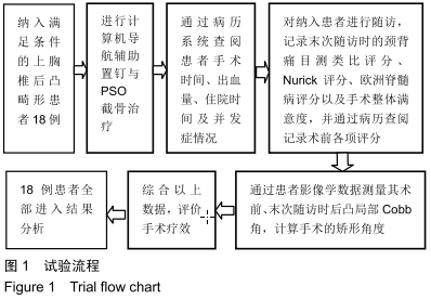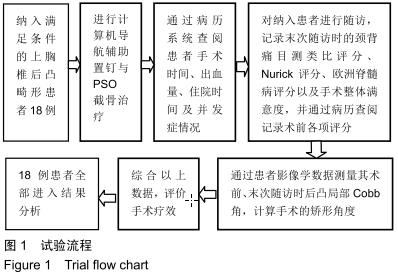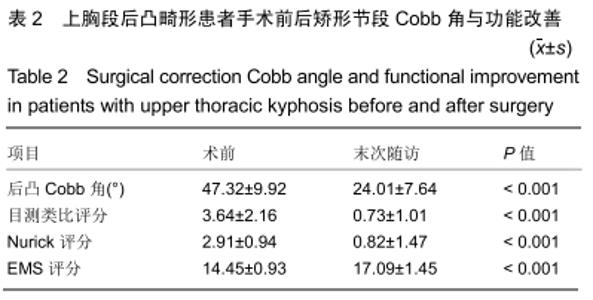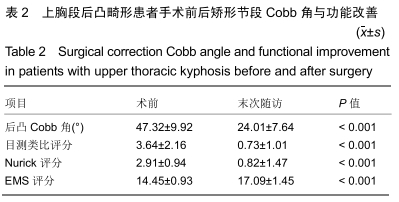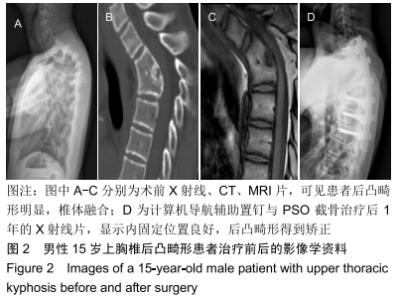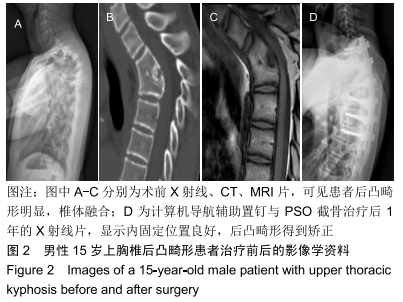[1] CHEN Y, LÜ G, WANG B, et al.Posterior Vertebral Column Resection With Intraoperative Manual Retraction for the Treatment of Posttubercular Kyphosis in Upper Thoracic Spine or Cervicothoracic Junction.Clin Spine Surg.2017;30(8): E1055-E1061.
[2] MUMMANENI PV, DEUTSCH H, MUMMANENI VP. Cervicothoracic kyphosis.Neurosurg Clin N Am. 2006;17(3):277-287.
[3] LIU Y, CHEN Y, YANG L, et al.The surgical treatment and related management for post-tubercular kyphotic deformity of the cervical spine or the cervico-thoracic spine.Int Orthop.2012;36(2): 367-372.
[4] FUENTES S, MALIKOV S, BLONDEL B, et al.Cervicosternotomy as an anterior approach to the upper thoracic and cervicothoracic spinal junction.J Neurosurg Spine.2010;12(2):160-164.
[5] POINTILLART V, AUROUER N, GANGNET N, et al.Anterior Approach to the Cervicothoracic Junction Without Sternotomy. Spine(Phila Pa 1976).2007;32(25):2875-2879.
[6] HODGSON A.Anterior spinal fusion. The operative approach and pathological findings in 412 patients with Pott's disease of the spine. Br J Surg.1960;48:172-178.
[7] MIHIR B, VINOD L, UMESH M, et al.Anterior Instrumentation of the Cervicothoracic Vertebrae.Spine(Phila Pa 1976). 2006;31(9): E244-E249.
[8] AMES CP, SMITH JS, SCHEER JK, et al.A standardized nomenclature for cervical spine soft-tissue release and osteotomy for deformity correction: clinical article.J Neurosurg Spine.2013; 19(3):269-278.
[9] KIM HJ, PIYASKULKAEW C, RIEW KD.Comparison of Smith-Petersen Osteotomy Versus Pedicle Subtraction Osteotomy Versus Anterior-Posterior Osteotomy Types for the Correction of Cervical Spine Deformities.Spine(Phila Pa 1976). 2015;40(3):143-146.
[10] SAMUDRALA S, VAYNMAN S, THIAYANANTHAN T, et al. Cervicothoracic junction kyphosis: surgical reconstruction with pedicle subtraction osteotomy and Smith-Petersen osteotomy.J Neurosurg Spine.2010;13(6):695-706.
[11] SMITH JS, SHAFFREY CI, LAFAGE R, et al.Three-column osteotomy for correction of cervical and cervicothoracic deformities: alignment changes and early complications in a multicenter prospective series of 23 patients.Eur Spine J.2017; 26(8):2128-2137.
[12] IYER RR,ELDER BD,GARZON-MUVDI T,et al.Use of an Articulating Hinge to Facilitate Cervicothoracic Deformity Correction During Vertebral Column Resection.Oper Neurosurg(Hagerstown). 2018;15(3):278-284.
[13] PARK P, WANG AC, SANGALA JR, et al.Impact of multimodal intraoperative monitoring during correction of symptomatic cervical or cervicothoracic kyphosis.J Neurosurg Spine.2011; 14(1):99-105.
[14] 刘伟,杨操,杨述华,等.术中三维影像脊柱导航引导半椎体切除及椎弓根螺钉置入矫治儿童先天性脊柱侧后凸畸形[J].中国脊柱脊髓杂志, 2015,25(8):705-710.
[15] 李勤,田伟,刘波,等.导航辅助下经椎弓根椎体截骨治疗陈旧性胸腰椎骨折伴后凸畸形[J].中华创伤骨科杂志,2007,9(7):616-618.
[16] 樊勇,吴子祥, 杨红军,等.术前数字化截骨设计及术中导航辅助技术矫正胸腰段骨折术后继发角状后凸畸形[J].中华创伤骨科杂志, 2015,17(3):185-190.
|
